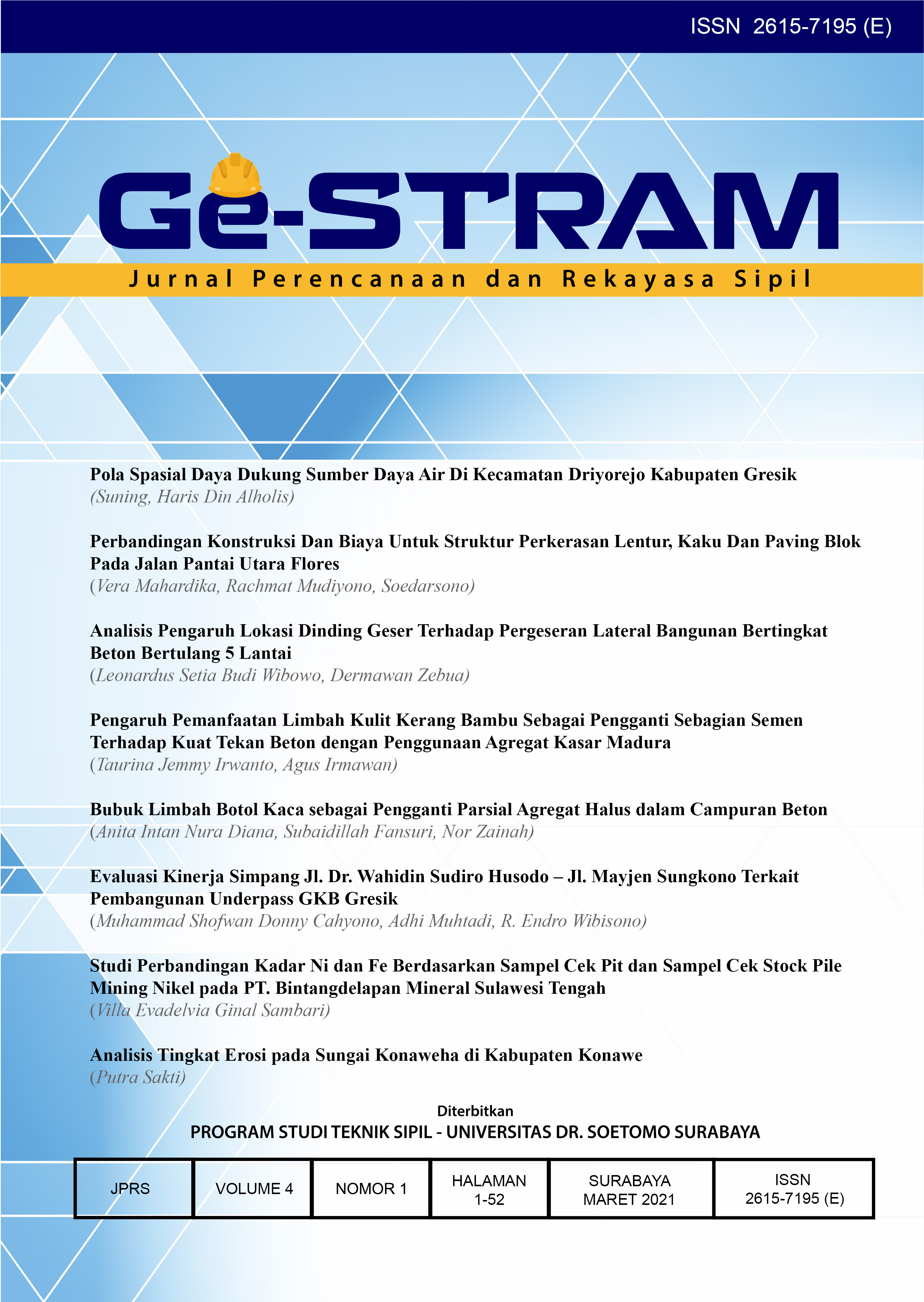Analisis Tingkat Erosi pada Sungai Konaweha di Kabupaten Konawe
 Abstract views: 309
,
Abstract views: 309
,
 PDF downloads: 636
PDF downloads: 636
Abstract
Erosion causes the loss of a fertile layer of soil and good for crop growth as well as reduced soil ability to absorb and retain water. The transported land will be deposited elsewhere, in rivers, reservoirs, lakes, irrigation channels, on farmland and so on.
The purpose of this research is to analyze the large rainfall of the Konaweha River area. Analyzes large actual erosion (EA) & Potential Erosion (Ep), the average that occurs on the Konaweha River every year.
The method used to calculate average maximum rainfall is arithmetic.
Based on the results of analysis gained on erosion at the upper Abuki River, the location in Konawe district, can be concluded as follows:
So the magnitude of actual erosion (Ea) on average that occurs on the river Konaweha every year coming 5.829 tons/ha/year, and potential erosion (Ep) on average that occurs on the river Konaweha every year coming 196.246 tons/ha/year.
References
Anonim, 2004, Kajian Erosi dan Sedimentasi Pada DAS Teluk Balikpapan Kalimantan Timur, CRC/URI CRMP. Balikpapan.
Asdak C, 1995, Hidrologi dan Pengelolaan Daerah Aliran Sungai, Gadjah Mada University Press, Yogyakarta.
Joseph B Franzini, Linsley Ray K, 1989. Teknik Sumber Daya Air Jilid I, Erlangga, Jakarta
McCuen Richard H, 1998, Hidrologic Analisis and Design, Prentice Hall Upper Saddle River, New Jersey 07458.
Linsley Ray K, 989. Hidrologi untuk InsinyurI, Erlangg, Jakarta.
Oehadijono. 1993, Buku Pelajaran Dasar-dasar Teknik Sungai, Universitas Hasanuddin, Makassar.
Soebarkah Imam Hidrologi, 1986. Hidrologi untuk Perencanaan Bangunan Air. Ide Dharma Bandung.
Soemarto CD, 1986, Hidrologi Teknik, Erlangga, Jakarta.
Soewarno, 1991, Hidrologi Pengukuran Dan Pengolahan Data Aliran Sungai (Hidrometri), Nova, Bandung.
Sosrodarsono S, dan Takeda K, 1985, Hidrologi untuk Pengairan , Pradnya Paramita, Jakarta.
Copyright (c) 2021 putra sakti

This work is licensed under a Creative Commons Attribution-ShareAlike 4.0 International License.
Authors who publish with this journal agree to the following terms:
- Authors retain copyright and grant the journal right of first publication with the work simultaneously licensed under a Creative Commons Attribution-ShareAlike 4.0 International License that allows others to share the work with an acknowledgement of the work's authorship and initial publication in this journal.
- Authors are able to enter into separate, additional contractual arrangements for the non-exclusive distribution of the journal's published version of the work (e.g., post it to an institutional repository or publish it in a book), with an acknowledgement of its initial publication in this journal.
- Authors are permitted and encouraged to post their work online (e.g., in institutional repositories or on their website) prior to and during the submission process, as it can lead to productive exchanges, as well as earlier and greater citation of published work (See The Effect of Open Access).

This work is licensed under a Creative Commons Attribution-ShareAlike 4.0 International License.















